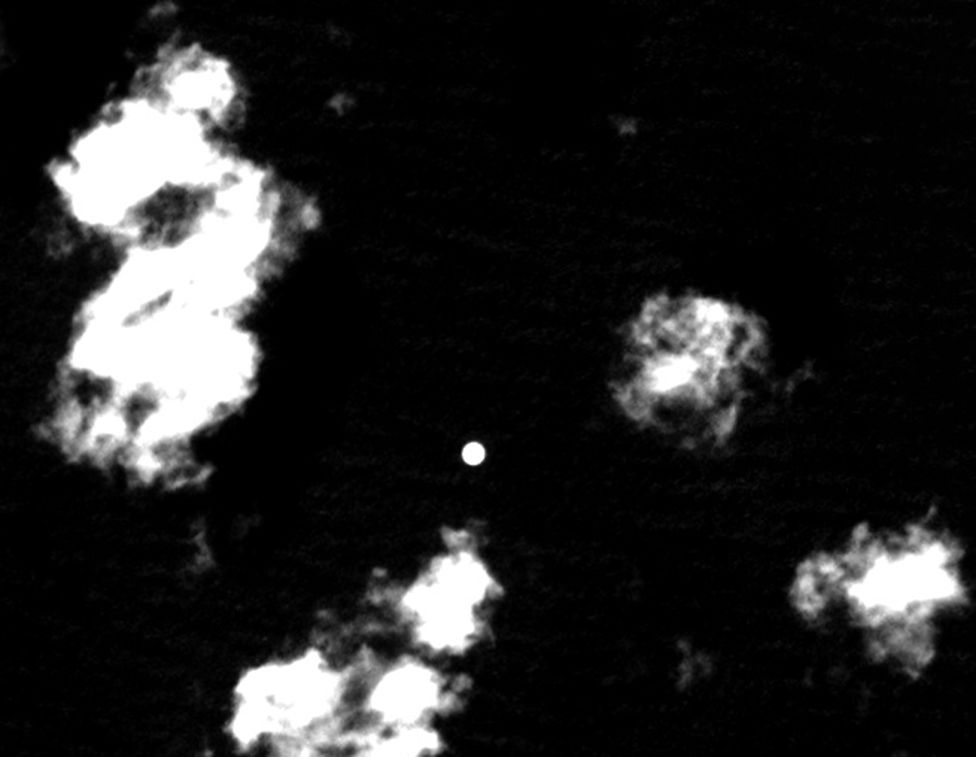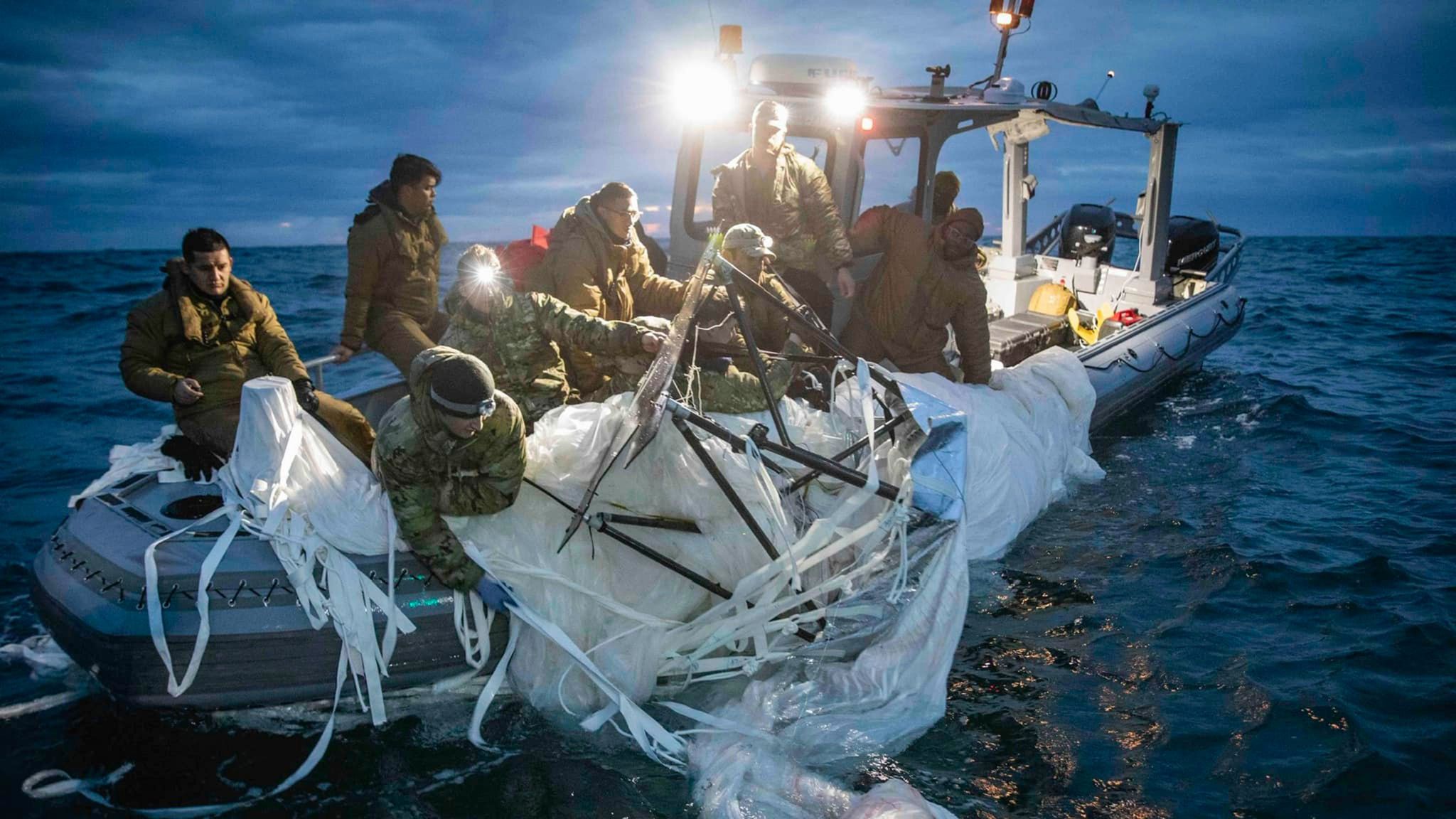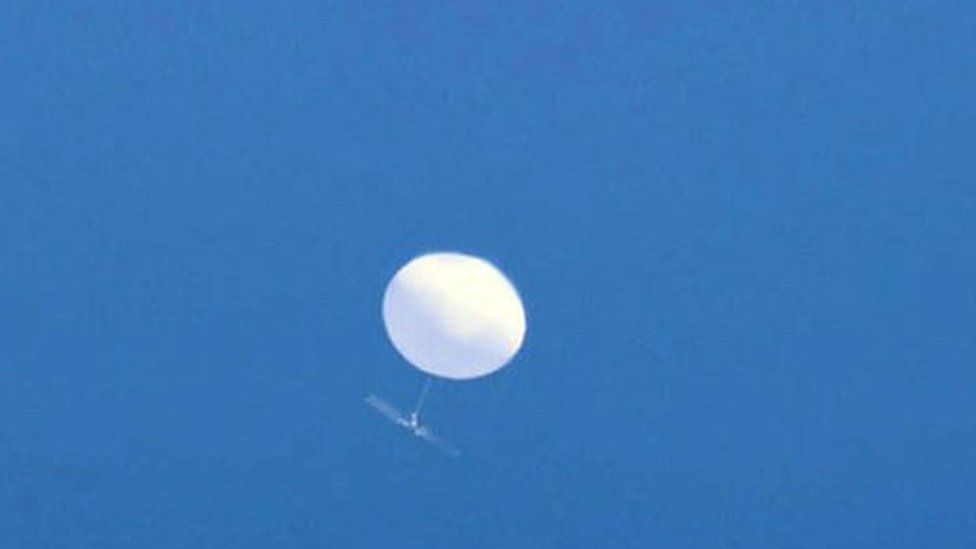Gordon Corera

New evidence of China's spy balloon programme - including flights over Japan and Taiwan - has been uncovered by BBC Panorama.
Japan has confirmed balloons have flown over its territory and said it's prepared to shoot them down in future.
China has not directly addressed the evidence presented by the BBC.
US-China relations were thrown into turmoil earlier this year, when an alleged Chinese spy balloon was shot down off the US coast.
China claimed the balloon seen over north-western US in late January was a civilian airship, used for scientific research such as meteorology - and that it was an unintended and isolated event.
John Culver - a former East Asia analyst for the CIA - told Panorama that this "had been not just a one-off, but a continuing effort dating back at least five years." He said the Chinese balloons were "specially designed for these long-range missions" and some had "apparently circumnavigated the globe".
 IMAGE SOURCE,TYLER THOMPSON/US NAVYImage caption,
IMAGE SOURCE,TYLER THOMPSON/US NAVYImage caption,February 2023: US Navy personnel recover the debris from a suspected spy balloon in the North Atlantic
Working with Synthetaic, an artificial intelligence company which sifted through huge amounts of data captured by satellites, the BBC has found multiple images of balloons crossing East Asia.
The company's founder, Corey Jaskolski, found evidence of one balloon crossing northern Japan in early September 2021. These images have not been published before.
Mr Jaskolski also believes the evidence points to this balloon having been launched from deep inside China, south of Mongolia. The BBC has been unable to confirm this.
Japan is a close ally of the US and more American forces are stationed there than in any other foreign country.
 Image caption,
Image caption,A suspected Chinese spy balloon, photographed over Taiwan
Yuko Murakami, from the Japanese ministry of defence, told the BBC that the government was "taking all precautions to monitor the situation on a daily basis" and would even be willing to shoot down balloons to protect the "lives and property of people in the territory of Japan".
The US State Department says it believes the Chinese balloons are equipped to gather signals intelligence. It says the aircraft it discovered over the US had "multiple antennas, likely capable of collecting and geo-locating communications".
To investigate whether China had launched other balloons, the Panorama team first searched social media and press reports across the region for sightings of UFOs in the sky.
They found two photographs taken by Taiwan's weather service, appearing to show a balloon over the capital, Taipei, in late September 2021.
Mr Jaskolski then cross-referenced them with satellite imagery. "Within 90 seconds, we found the balloon off the coast of Taiwan," he says.
From spy balloons to secret police stations and dissidents on the run, Panorama investigates China's global surveillance operation. We reveal new details about Beijing's fleet of spy balloons - and hack a Chinese-made security camera to show how similar devices that line our streets could be exploited.
The Taiwanese government told Panorama that it believed it was a weather balloon but Mr Jakolski disagrees.
"Just based on the diameter of the balloon and the fact that the operating altitudes look similar… that looks an awful lot like the balloon that flew over the United States, over Japan," he says.
Democratically-governed Taiwan has long been in China's sights.
Last year the Chinese military launched a rehearsal of a full-scale attack.
US President Joe Biden has previously said the US would defend Taiwan if China attacked.
How AI helped locate the balloons
Corey Jaskolski started with a sketch of what he thought the balloon would look like from space. He then fed this outline into his AI software, together with rough coordinates of where it was last seen.
He also analysed wind models to trace the balloon's path and find its origin.
 Image caption,
Image caption,Corey Jaskolski
Working with satellite images provided by the company Planet Labs, Corey fed all the information into his software, known as RAIC (rapid automatic image categorization), to locate the balloons.
Surveillance balloons are huge - the size of several buses - and carry sophisticated equipment capable of collecting large amounts of data on targets below.
But photographed by a satellite from space, they appear to be just small white blobs.
Mr Jaskolski's research shows that the balloon which flew over the US in February was at one point about 80 miles (130 km) from a nuclear air force base in the state of Montana.
He also plotted the flight path of the balloon back to its most likely launch site - Hainan Island in the South China Sea.
"It looks like on the… launch there was cloud cover," he says. "And if I were going to launch a balloon, I would have chosen a cloudy day in order to minimise that chance of detection."
 IMAGE SOURCE,SYNTHETAIC/PLANET LABS PBCImage caption,
IMAGE SOURCE,SYNTHETAIC/PLANET LABS PBCImage caption,Corey Jaskolski traced the path of the balloon through satellite images such as this one
In a statement, the Chinese Embassy in London accused the US of itself releasing a large number of high-altitude balloons, which have continuously circled the globe and illegally flown over China's airspace.
It said that "China is a responsible country" which always acts "in strict compliance with international law and respects all countries' sovereignty and territorial integrity". It added that it rejects "unfounded allegations to denigrate and attack China".
No comments:
Post a Comment